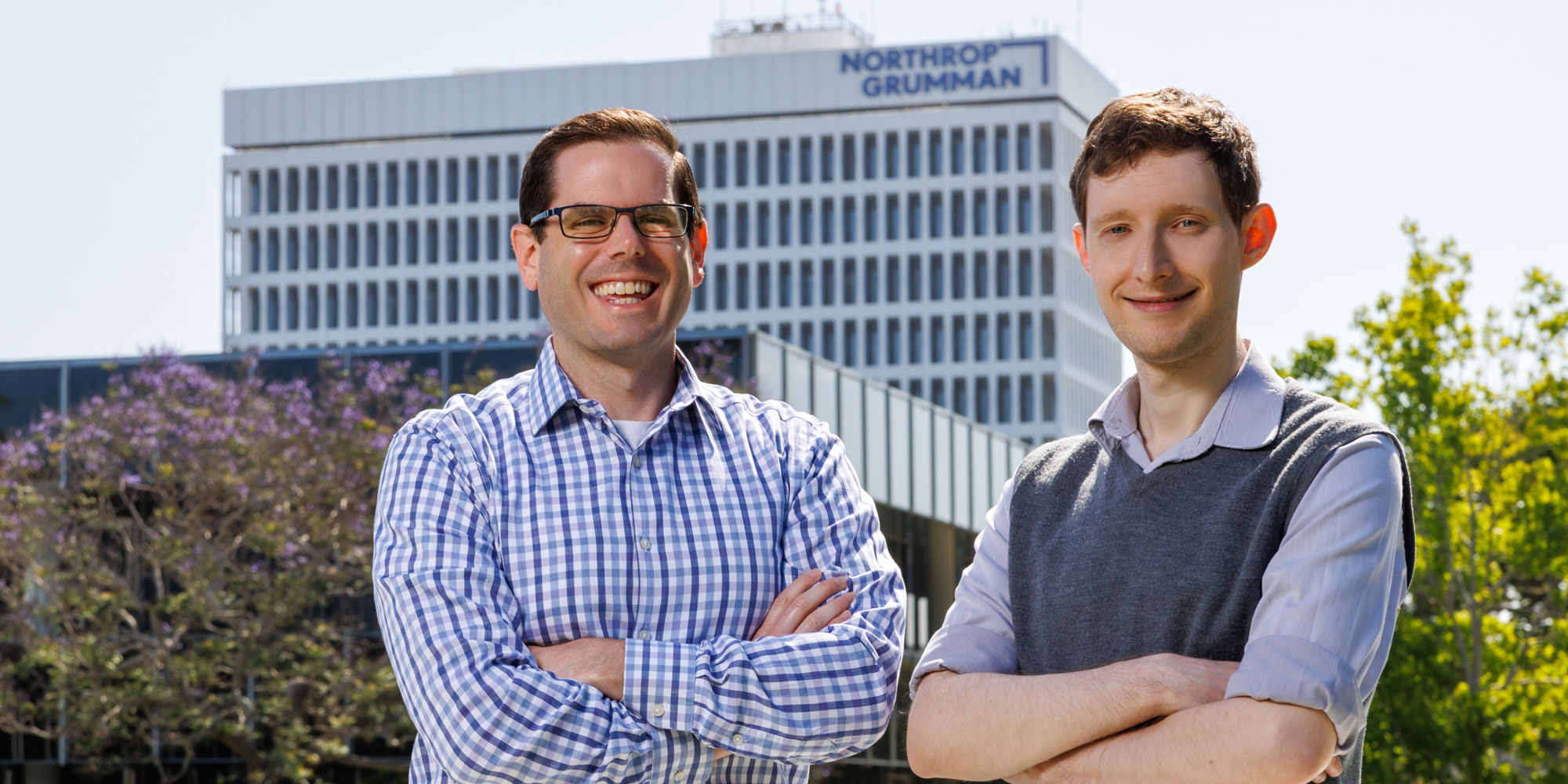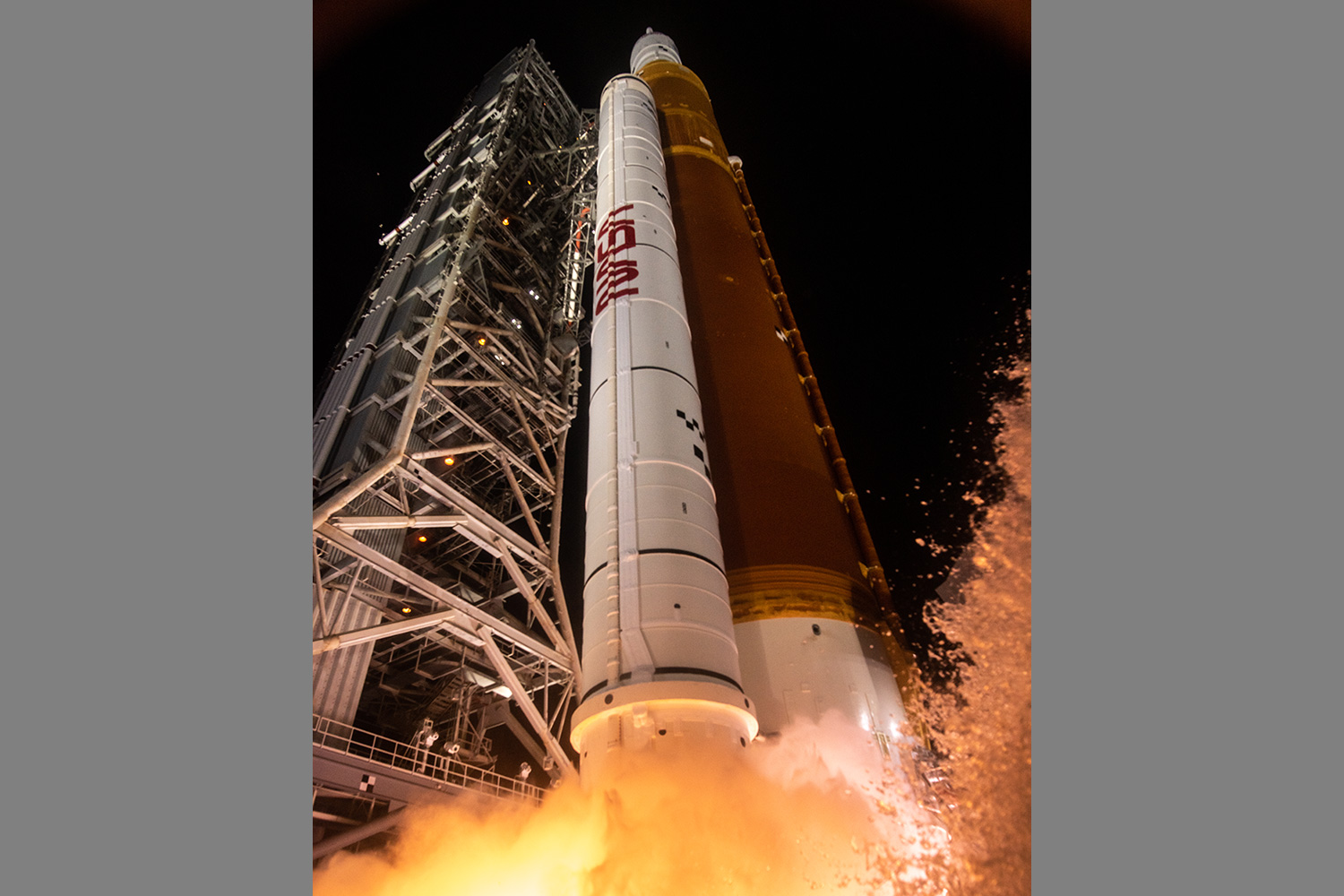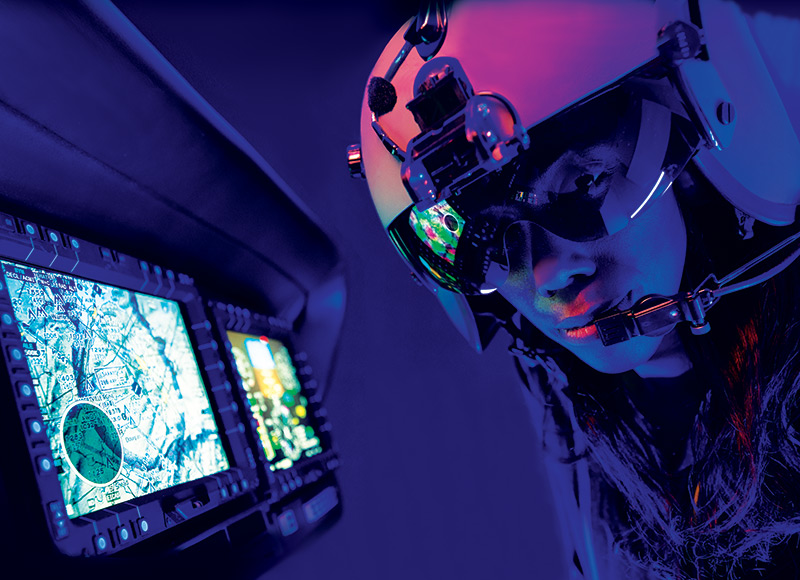This July, Northrop Grumman celebrated the one-year anniversary of scientific operations by NASA’s James Webb Space Telescope.
Answering DARPA’s Call
Answering DARPA’s Call: Meet the Team Revolutionizing Filter Technology
Improving Communications Technology, From Your Cellphone to Global Security
By Nestor Vences
You’re in gridlock traffic on the highway and your phone rings. You pick up. Out of the corner of your eye you notice the person in the car next to you is also on a call. Why don’t your conversations overlap? A key part of the answer is filters.
For the last 50 years, electronics have shrunk and their capabilities have expanded, all while filters haven’t changed much at all. Eventually, the current large size of filters will limit communications systems’ entire capabilities. Today, three Northrop Grumman engineers are on a quest to change that.
Matthew Laurent, semiconductor product engineer, along with Dr. Eric Wagner, manager of engineering, and Matt Torpey, radio frequency (RF) engineer, are answering a call from the Defense Advanced Research Projects Agency (DARPA) for new compact electrical filter technologies. Their efforts support DARPA’s COFFEE program, which kicked off in 2021. COFFEE, which is short for Compact Front-End Filters at the Element-Level, is looking to advance filters for the next generation of communications applications.
“The new filter technology being developed is hoping to miniaturize filters and have them catch up with the rest of the receiver electronics,” explained Eric.
Next Generation Filters
A filter is a circuit capable of passing or amplifying certain frequencies while reducing other frequencies. In other words, filters allow your device, like a cellphone, to tune into your signal of interest while simultaneously filtering out all other signals nearby.
Today’s filters come in three varieties: electromagnetic, magnetic and acoustic.
“What we’re trying to do is to develop the next generation of each of these types of filters,” said Eric.
Acoustic filters are used in cellphones. “Next generation acoustic filters for handsets will enable your device to work better in highly congested frequency spaces, like a busy pickup zone at an airport or a concert,” added Matt.
Filters are also critical for the work of our military and protecting national security. “Future electromagnetic and magnetic filters would provide a decisive edge in military applications, making our communications harder to intercept by foreign adversaries,” said Matthew.
Percolating New Ideas
In 2022, three Northrop Grumman COFFEE-related proposals — KONA, GRINDS and ARABIKA, led respectively by Eric, Matthew and Matt — received funding from DARPA to continue research for 18 months.
KONA, headed by Eric, is looking to address the size of electromagnetic filters, which are usually too big to be considered compact. Smaller filters enable smaller devices, which could save customers money.
“We’re trying to simplify the filter structure without losing its ability to actually filter,” Eric said.
With GRINDS, Matthew is developing a special fabrication and assembly technique that will create magnetic filters that don’t consume a lot of power while remaining small.
ARABIKA, led by Matt, is a partnership with Georgia Tech and the University of Michigan that’s looking to develop a new acoustic resonator, a part of the filter that traps unwanted noise, eliminating the need to ask, “Can you hear me now?”
A New Era of Communications Capabilities
This year, after the initial research phase concludes, DARPA will decide whether to continue funding that research.
“We’re almost competing against each other to produce the next big filter technology,” said Matthew. “Our hope is that all three of our proposals are successful and move on to the next phase, and then the final phase after that,” said Eric.
Our team’s work on KONA, GRINDS and ARABIKA could help DARPA usher in a new era for communications capabilities. For the average person, next generation acoustic filters will greatly improve calls. For our military, the capabilities of KONA and GRINDS will enable harder-to-track battlefield communications, giving the United States an important advantage over its adversaries, now and into the future.
If you’re interested in defining possible with us, check out what life at Northrop Grumman is like.
Image below: Two members of our team supporting DARPA’s COFFEE program, Matthew Laurent and Eric Wagner (from left to right) at our Space Park site. Photo by Daniel Montoya.



